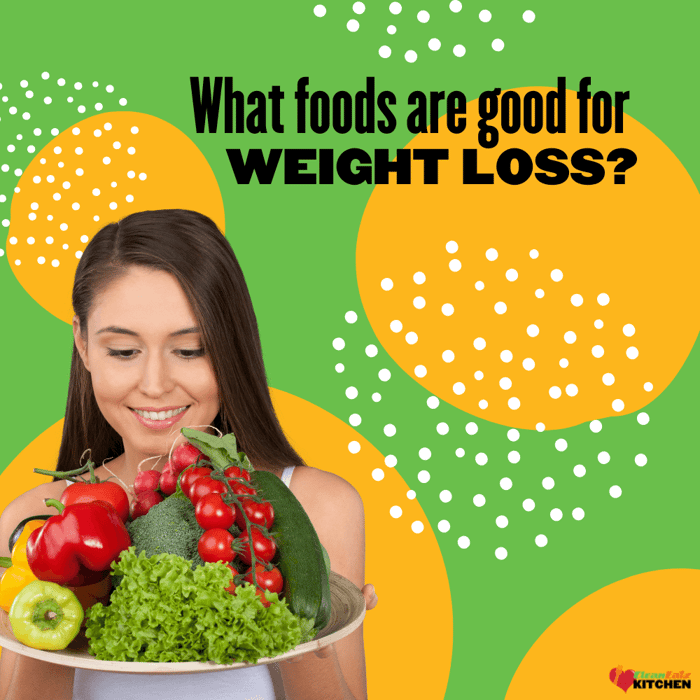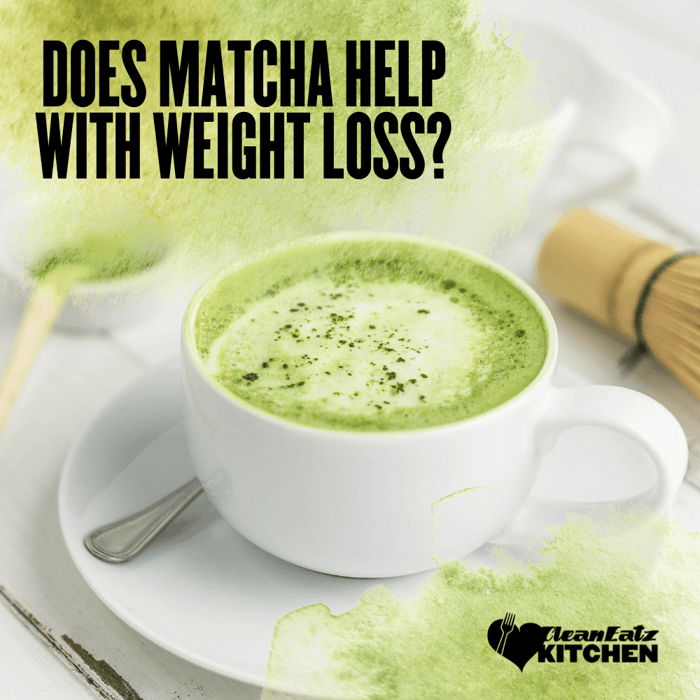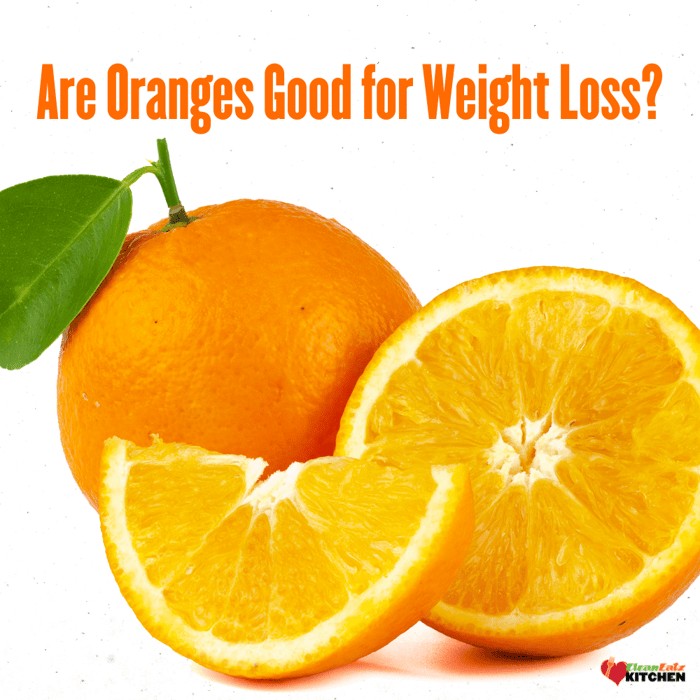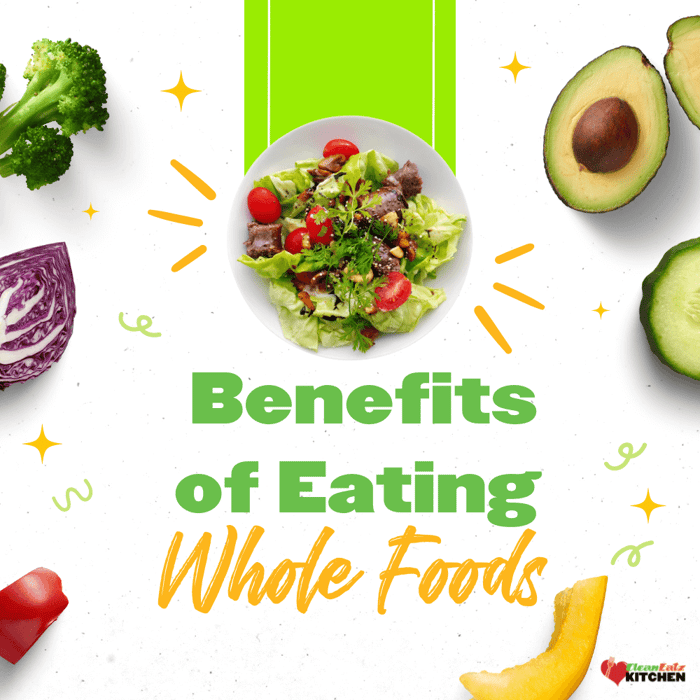What Foods Are Good for Weight Loss? Your Quick Start Guide

Jason Nista
Nutrition
|
Weight Loss
11/12/2025 1:49pm
11 minute read
Quick Answer: The best foods for weight loss are high in protein and fiber while being low in calories. Focus on lean proteins (chicken, fish, Greek yogurt), non-starchy vegetables, whole fruits, legumes, and whole grains. These foods keep you full, support muscle maintenance, and create the calorie deficit needed for fat loss. Aim for 25-40g of protein per meal and fill half your plate with vegetables.
Want the complete picture? Our 100 Best Foods for Weight Loss: Complete A-Z Guide provides everything you need: detailed nutrition data for 100 foods, meal plans, shopping lists, and science-backed strategies for sustainable weight loss.
Table of Contents
- Why Some Foods Work Better for Weight Loss
- What Makes a Food "Good" for Weight Loss?
- Best Protein Foods for Satiety
- High-Fiber Carbs That Keep You Full
- Low-Calorie Volume Foods
- Healthy Fats (Measure These!)
- Easy Plate Building Formula
- 7 High-Satiety Meal Ideas
- Smart Grocery Shopping List
- Watch Out For These Mistakes
- Frequently Asked Questions
Why Some Foods Work Better for Weight Loss
Here's the truth most diet articles won't tell you upfront: weight loss fundamentally requires eating fewer calories than you burn. But that's like saying running a marathon just requires putting one foot in front of the other—technically true, but missing the entire point.
The real question isn't whether you need a calorie deficit (you do), but how to create one without feeling miserable, losing muscle, or giving up after two weeks. That's where food choice becomes critical.
After helping thousands of people lose weight through our meal delivery service and working with registered dietitians, we've learned that successful weight loss comes down to eating foods that:
- Keep you satisfied on fewer calories
- Preserve your muscle mass during fat loss
- Provide enough energy for workouts and daily life
- Actually taste good enough to eat consistently
This quick-start guide gives you the essentials you need to make smart food choices today. If you want the deep dive with complete nutrition data, recipes, meal plans, and every detail about 100 weight-loss foods, check out our comprehensive 100 Best Foods for Weight Loss guide.
What Makes a Food "Good" for Weight Loss?
Not all calories affect your body the same way. Three key factors separate weight-loss-friendly foods from the ones that leave you hungry an hour later:
High Satiety Per Calorie
Protein and fiber are your best friends here. Research consistently shows that increasing protein intake helps you feel full on fewer calories and protects lean muscle during weight loss. Fiber adds bulk to meals and slows digestion, keeping you satisfied longer.
For most people, aiming for 25-40 grams of protein per meal is the sweet spot. Learn more about optimal protein intake in our high-protein diet guide.
Low Energy Density
Water- and fiber-rich foods like vegetables, whole fruit, and broth-based soups give you volume for very few calories. Research from Penn State shows this approach naturally reduces calorie intake by 400+ calories per day without hunger.
Heart-Smart Fats
While fats are calorie-dense, choosing unsaturated fats from sources like olive oil, avocados, nuts, and fatty fish supports heart health and helps you feel satisfied. The key? Measuring portions carefully since healthy fats pack 9 calories per gram.
Best Protein Foods for Satiety
Protein should anchor every meal. Here's your quick reference for the best options:
Lean Meats & Poultry
- Chicken breast: 31g protein per 100g, extremely lean
- Turkey breast: 29g protein per 100g, versatile and affordable
- Lean beef (93/7): 26g protein per 100g, rich in iron and B12
- Pork tenderloin: 26g protein per 100g, often overlooked but excellent
Seafood Stars
- Tuna (canned in water): 25g protein per 100g, budget-friendly at 116 calories
- Salmon: 22g protein per 100g plus heart-healthy omega-3s
- Cod: 20g protein per 100g, extremely lean at just 82 calories
- Shrimp: 24g protein per 100g, quick-cooking at only 99 calories
Plant-Based Proteins
- Tofu (firm): 17g protein per 100g, absorbs flavors beautifully
- Tempeh: 19g protein per 100g, fermented for gut health
- Lentils: 9g protein per 100g cooked, high in fiber and budget-friendly
- Black beans: 9g protein per 100g cooked, versatile in many cuisines
- Edamame: 11g protein per 100g, perfect snack option
Dairy Delights
- Greek yogurt (non-fat): 10g protein per 100g, probiotic benefits
- Cottage cheese (low-fat): 11g protein per 100g, casein for sustained release
- Eggs: 13g protein per 100g, most bioavailable protein source
Pro tip: Can't decide how much you need? Use our calorie calculator to determine your protein targets based on your goals and activity level.
High-Fiber Carbs That Keep You Full
Carbs aren't the enemy—the wrong carbs are. Focus on these high-fiber options:
Whole Grains
- Oats (4g fiber per 1/2 cup dry)
- Quinoa (5g fiber per cup cooked)
- Brown rice (4g fiber per cup cooked)
- Whole wheat pasta (6g fiber per cup cooked)
Legumes (Double Duty: Protein + Fiber)
- Navy beans (19g fiber per cup cooked)
- Chickpeas (12g fiber per cup cooked)
- Lentils (16g fiber per cup cooked)
Starchy Vegetables
- Sweet potatoes (measure portions, eat with skin)
- Regular potatoes (especially when cooked and cooled for resistant starch)
- Butternut squash
- Corn
Low-Calorie Volume Foods
These foods let you eat bigger portions while keeping calories in check:
Non-Starchy Vegetables (Eat Liberally)
- Leafy greens: spinach, kale, romaine, arugula
- Cruciferous: broccoli, cauliflower, Brussels sprouts
- Others: peppers, zucchini, mushrooms, tomatoes, cucumbers, green beans, asparagus
Whole Fruits
- Berries: High fiber, low calories, antioxidant-rich
- Apples and pears: 4-6g fiber each, portable
- Citrus: Vitamin C powerhouses
- Melons: High water content, naturally sweet
Important: Whole fruit is always better than juice. The fiber in whole fruit slows sugar absorption and increases fullness.
Soups and Salads
- Broth-based vegetable soups
- Large salads with lean protein (watch creamy dressings)
- Veggie-packed stir-fries
Healthy Fats (Measure These!)
Healthy fats are essential, but they're calorie-dense. Always measure:
- Oils: Olive oil, avocado oil (1 tsp = ~40 calories)
- Nuts and seeds: Almonds, walnuts, pistachios, chia, flax (1 oz = 150-190 calories)
- Avocado: 1/3 avocado = ~80 calories
- Fatty fish: Salmon, mackerel (omega-3 benefits worth the calories)
Looking for more detail on healthy fats and how to incorporate them? Our complete foods guide breaks down 10 healthy fats with exact portions and when to use each.
Easy Plate Building Formula
Stop overthinking every meal. Use this simple template:
The Weight Loss Plate Formula:
- ½ plate: Non-starchy vegetables or whole fruit
- ¼ plate: Lean protein (25-40g per meal)
- ¼ plate: High-fiber carbs (whole grains, beans, or starchy vegetables)
- 1-2 tsp: Added healthy fats or a small portion of nuts/seeds
This approach aligns with evidence-based nutrition guidelines and naturally creates proper portion control. For those who want done-for-you portions, our Weight Loss Meal Plan uses this exact formula with every meal under 500 calories.
7 High-Satiety Meal Ideas
Here are quick meal combinations that hit all the right notes:
- Greek Yogurt Power Bowl: 1-1.5 cups nonfat Greek yogurt + 1 cup berries + 1 Tbsp almonds (~300 calories, 25g protein)
- Chicken Quinoa Fajita Bowl: 4 oz grilled chicken + 1/2 cup cooked quinoa + peppers and onions + salsa + 2 Tbsp Greek yogurt (~400 calories, 38g protein)
- Salmon, Brown Rice & Broccoli: 4 oz baked salmon + 1/2 cup brown rice + 2 cups roasted broccoli + sesame-ginger drizzle (~450 calories, 35g protein)
- Turkey and Potatoes: 5 oz lean ground turkey + 1 medium baked potato + 2 cups green beans + measured pesto (~420 calories, 40g protein)
- Tofu Curry Bowl: 5 oz extra-firm tofu + 1/2 cup cooked farro + 2 cups mixed vegetables + light coconut milk curry sauce (~450 calories, 28g protein)
- Black Bean Burrito Bowl: 3/4 cup black beans + cauliflower rice + shredded cabbage + 1/4 avocado + pico de gallo (~380 calories, 18g protein)
- Cottage Cheese Plate: 1 cup low-fat cottage cheese + mixed berries + 1 Tbsp ground flaxseed + cinnamon (~250 calories, 28g protein)
Need more meal inspiration? Check out our guides on healthy dinner recipes and healthy lunch ideas.
Smart Grocery Shopping List
Make your weekly shopping trip efficient with these essentials:
Proteins (Buy Weekly)
- 2 lbs chicken breast or thighs
- 1 lb lean ground turkey (93% lean)
- 1 lb salmon or white fish
- 1 dozen eggs
- 2 containers Greek yogurt
- 1 container cottage cheese
- Canned tuna or salmon
- 1 block firm tofu (if plant-based)
- 2 cans beans (black, chickpeas)
Produce (Buy Fresh Twice Weekly)
- 2 bags mixed greens or spinach
- 1 head broccoli
- 2 bell peppers
- 1 bag baby carrots
- 2 zucchini
- 1 container mushrooms
- 1 container berries
- 3 apples
- 1 container cherry tomatoes
- 1 avocado
Pantry Staples (Stock Monthly)
- Quinoa or brown rice
- Rolled oats
- Whole grain bread or wraps
- Extra-virgin olive oil
- Apple cider vinegar
- Herbs and spices
- Low-sodium broth
Time-saver tip: If grocery shopping and meal prep feel overwhelming, our Build Your Meal Plan lets you customize exactly what you want from 30+ options, delivered frozen to your door for just $8.99 per meal.
Watch Out For These Mistakes
1. Ultra-Processed "Diet" Snacks
Many diet foods are low in volume and easy to overeat. Focus on whole foods that give you more bang for your calorie buck.
2. Liquid Calories
Sugary drinks, heavy coffee drinks, and fruit juices add up fast with minimal satiety. The American Heart Association recommends limiting added sugar to about 6 teaspoons (25g) per day for women and 9 teaspoons (36g) for men.
3. Restaurant Portions and Hidden Sodium
Restaurant meals often contain 2-3 times the portions you need, plus excess sodium that can cause water retention. When eating out, use hand-size portions as a guide and consider splitting entrées.
4. Unlimited "Healthy Fats"
Oils, nut butters, nuts, and avocados are nutrient-dense but calorie-dense. One tablespoon of olive oil is 120 calories—easy to pour too much. Always measure your fats.
5. Skipping Protein at Meals
If you're eating mostly carbs and vegetables without adequate protein, you'll feel hungry quickly and risk losing muscle mass during weight loss. Every meal needs 25-40g of protein.
Frequently Asked Questions
Do I have to cut carbs completely to lose weight?
No. You can lose weight while eating carbs by choosing higher-fiber options like whole grains, beans, and starchy vegetables, and hitting your protein target inside a calorie deficit. Low-carb works for some people, but it's not required for weight loss success. Learn more about balancing macros in our portion control vs calorie counting guide.
Are fruit sugars a problem for weight loss?
Whole fruit is not a problem for weight loss. It's low in energy density and comes with fiber and water that help you feel full. The limits on sugar mainly apply to added sugars in processed foods, not the natural sugars found in whole fruit. The USDA MyPlate guidelines emphasize choosing whole fruit over juice.
Can nuts help or hurt weight loss?
Nuts can help with weight loss when portions are controlled. They're filling and nutrient-dense, and systematic reviews show nuts don't cause weight gain when calories are managed. The key is keeping portions to about 1 ounce (a small handful), which is 150-190 calories depending on the type.
How much protein do I need for weight loss?
Most people benefit from 0.8 to 1.2 grams of protein per pound of body weight daily for weight loss. This typically works out to 25-40 grams per meal, which helps you feel full, preserve muscle, and burn more calories through digestion. Read our complete breakdown in the 100 Best Foods guide.
Do I need to track calories or can I just use portions?
Both approaches work. Some people do better with precise calorie tracking using apps, while others prefer visual portion control methods. The key is finding what you'll stick with long-term. Research shows both methods can be equally effective when done consistently.
What if I don't have time to cook all these meals?
That's exactly why we created Clean Eatz Kitchen. Our meal plans are chef-prepared, portion-controlled, and designed by nutrition experts. They arrive frozen to your door and heat in under 4 minutes. No meal prep, no cleanup, just healthy eating made simple.
The Bottom Line
Weight loss doesn't require exotic superfoods or complicated rules. Focus on these fundamentals:
- Prioritize protein at every meal (25-40g)
- Fill half your plate with non-starchy vegetables
- Choose fiber-rich carbs for sustained energy
- Measure healthy fats to control calorie density
- Stay hydrated with calorie-free beverages
- Practice portion control even with healthy foods
This quick-start guide gives you the essentials to begin making smarter food choices today. When you're ready to go deeper, our 100 Best Foods for Weight Loss: Complete A-Z Guide provides everything you need for long-term success:
- Detailed nutrition data for 100 ranked foods
- Complete 7-day meal plan with recipes
- Smart shopping lists and meal prep strategies
- The latest research on protein, fiber, and metabolism
- Meal ideas for every calorie level
Want to simplify your weight loss journey even more? Explore our calorie-controlled meal plans for done-for-you portions that take the guesswork out of healthy eating. With options for every dietary preference and automatic calorie control, you can focus on living your life while the weight comes off naturally.
Ready to Take Action?
- Read the Complete 100 Foods Guide - Everything you need in one comprehensive resource
- Master Meal Prep - Save 6-8 hours weekly with our complete guide
- Try Our Weight Loss Meal Plan - Chef-prepared, portion-controlled meals starting at $49.99
- Calculate Your Calorie Needs - Know exactly what to aim for
This article is for educational purposes only and should not replace professional medical advice. Consult with a healthcare provider or registered dietitian before making significant dietary changes, especially if you have underlying health conditions.
Related Articles
Is Matcha Good for Weight Loss?
8 minute read
Are Oranges Good for Weight Loss?
7 minute read



